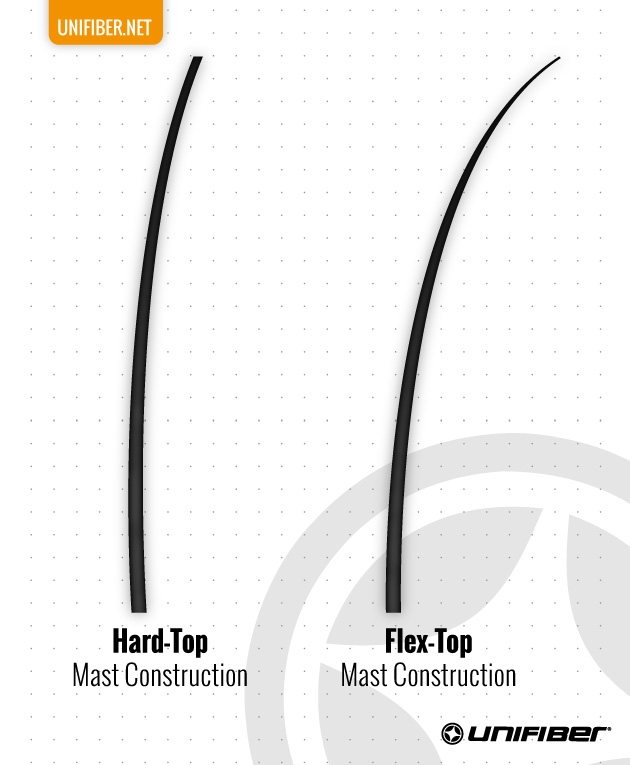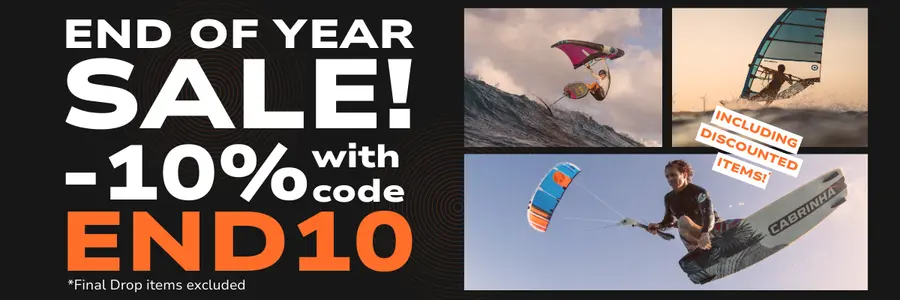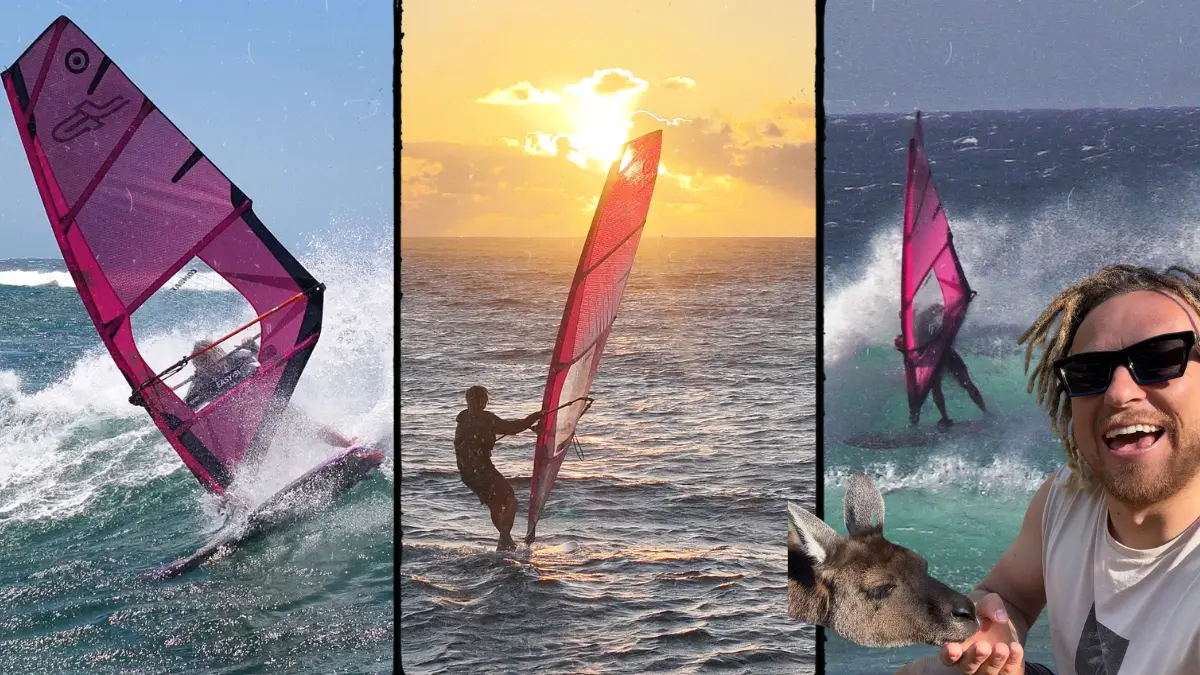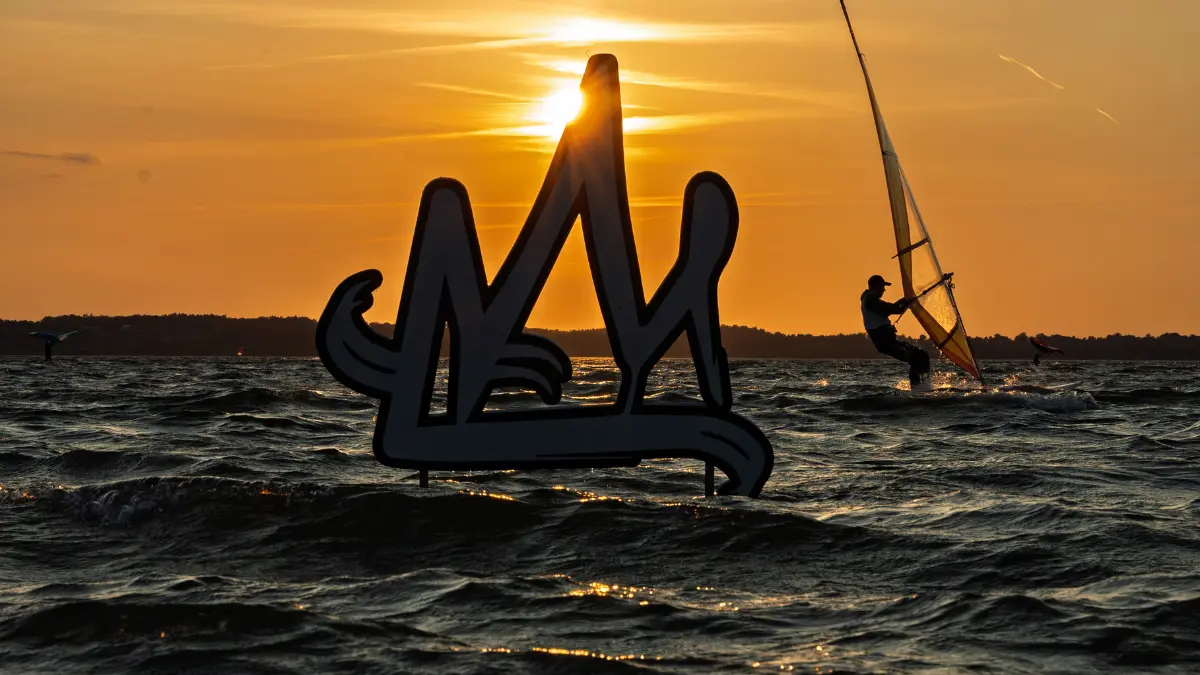Windsurfing Mast Importance
In the early days of windsurfing, the issue of selecting the right mast was practically non-existent. Sails were simple and masts quite universal. Although they were one-piece, heavy and less advanced in construction, nobody cared about their characteristics or technical details. They just simply worked, regardless of the brand. Today, when we have incredibly high-tech rigs, mast and sail must be a perfect fit together. Therefore, choosing the right mast for a sail is one of the most important stages of completing our own equipment. You can buy even the best and most expensive sail, but with poorly chosen mast it will perform less well than half cheaper, but good chosen set. Here is some information useful for understanding the world of windsurfing masts!

Length
When buying a new sail, the first step you should take is to check the length of the mast that is recommended for it. You will quickly notice that the recommended mast length is shorter than sail’s mast sleeve. This is due to the fact that windsurfing masts are mass produced only in several standard lengths, while sails can exist in many sizes. Because too long masts are not recommended for achieving good performances, sails usually use a little bit shorter ones, and for missing centimeters we use special extensions plugged into the base of the mast. Therefore, in the technical descriptions of each sail we will find such data as: length of the pocket mast, the recommended mast length and the length of required extension.
Stiffness
In the old days windsurfing masts were available only in one length, but could vary in stiffness. Today we have the opposite situation - manufacturers offer different lengths, but try to keep a similar stiffness for the given size. That’s the reason why you probably won’t find this parameter anymore in sail’s or mast’s description. Just follow the length of the mast to obtain sufficient stiffness.
Bend characteristic
Although masts may have the same length and stiffness, they can differ in how they bend. There are three basic bend characteristics:
- Flex Top - masts, in which the upper part is softer than the lower one
- Hard top - the upper part is stiffer than the lower one
- Constant Curve - masts roughly evenly bent at both ends

Because sailmakers very rarely clearly describe the desired mast bend characteristics of their sails, many windsurfers end as victims of mismatched masts. If you pay attention only to recommended mast length and ignore other factors, there is a high risk that you will get a poorly working rig. Symptoms such as lack of profile in the sail or excessively curled loose leach can seriously limit the performance. You can often hear complains that a sail generates weak power or quickly becomes unstable in higher winds. In most cases that’s due the mast/sail mismatch. How to avoid this? The easiest way is to buy the mast recommended by a sailmaker. You can be 99% sure that you will get the right one and achieve the best performances from your rig. Other solution is to choose a mast from brand called Unifiber, which offers mast in all bending characteristics. To help you find the right model, Unifiber has published a special mast chart that makes discovering what bend characteristics are used by different sailmakers pretty easy.
Carbon content
Carbon is such a wonderful remedy for improving the properties of the mast! The more % of carbon it has, the lighter and faster it will be on the water! Each mast works during sailing by slightly bending in different directions and coming back to its previous shape. The less time this swing takes, the better performances the sail can offer. The cheapest windsurfing masts contain about 30% of carbon. The most expensive and most competitive ones - about 100%. If you are just starting to learn how to windsurf and have a regular training sail, a cheap low carbon content mast will be enough. In case of recreational sails for intermediate windsurfers you should be looking at masts with carbon content from 60 to 80%. The 100% carbon masts are needed for the most performance oriented sails, usually used by experienced windsurfers.
Diameter
The final element in our search for the perfect mast will be the right diameter. Currently there are two types of masts on the market: with a standard diameter (SDM - Standard Diameter Mast) and reduced (RDM - Reduced Diameter Mast). SDM masts have a larger diameter tube, especially in the lower part, and thinner wall thickness. They offer lower weight and more dynamic performance, hence are preferred in high-performance slalom and racing sails. RDM masts operate more flexibly, making the sail seems a bit softer and easier to control in stronger winds. Their biggest advantage is greater breaking resistance, which is a result of thicker wall construction. Although they are a little heavier than SDM masts, thanks to smaller diameter tubes they make the rig feel more comfortable during maneuvers and are easy to grip. They are mainly used in wave, freestyle, freeride and sometimes even more competitive slalom sails.
The End Note
Although choosing the right mast seems a little bit complicated, it is really worth spending some time understanding this topic. If you want to get the most enjoyment from windsurfing, you really need to have a well matched rig. There is no other option! Buying a mast only because it was a little bit cheaper can hugely lower your fun on the water!
You can also dig deeper and find other great articles about masts. These are for example:
How Mast Bend Curve Influences Sail Behavior (thanks to Unifiber.net).
Should you have any more questions or need further consultancy, don't hesitate to contact us at our Customer Care section.
EASY / SURF Team
Blog
Watch ▶️
Maciek Rutkowski shredding Australian waves!
Maciek Rutkowski swaps racing gear for his wave setup in Australia. Nice conditions, clean lines and wave riding! Pure windsurfing fun!
READ MOREWatch ▶️
King of the Bay 2025 – Aftermovie!
Garnier King of the Bay 2025 didn't dissapoint. So sit back and enjot this official aftermovie!
READ MORERead
Top Gift Ideas for Wind, Kite, Wing, SUP and Surf Lovers!
Finding the right gift for someone who loves the water can be tricky — but it doesn’t have to be. Check our ideas!
READ MORE




















 Facebook
Facebook Instagram
Instagram YouTube
YouTube